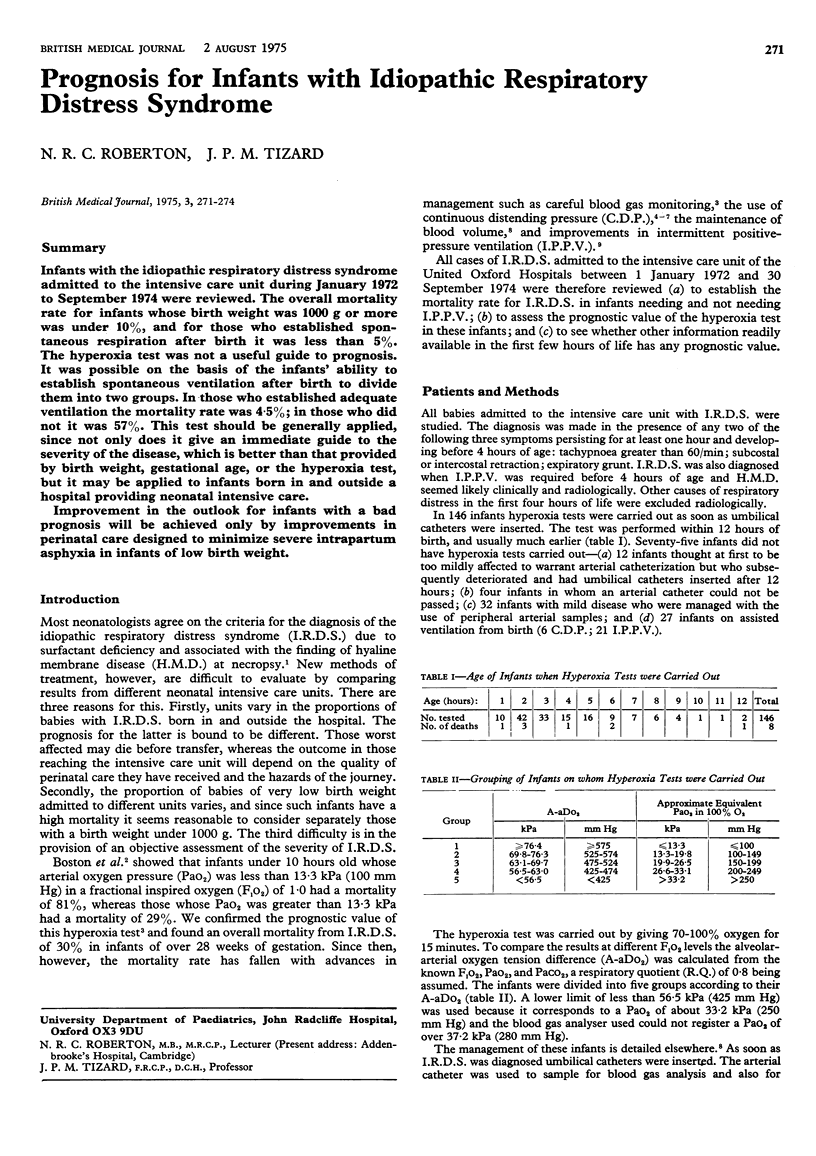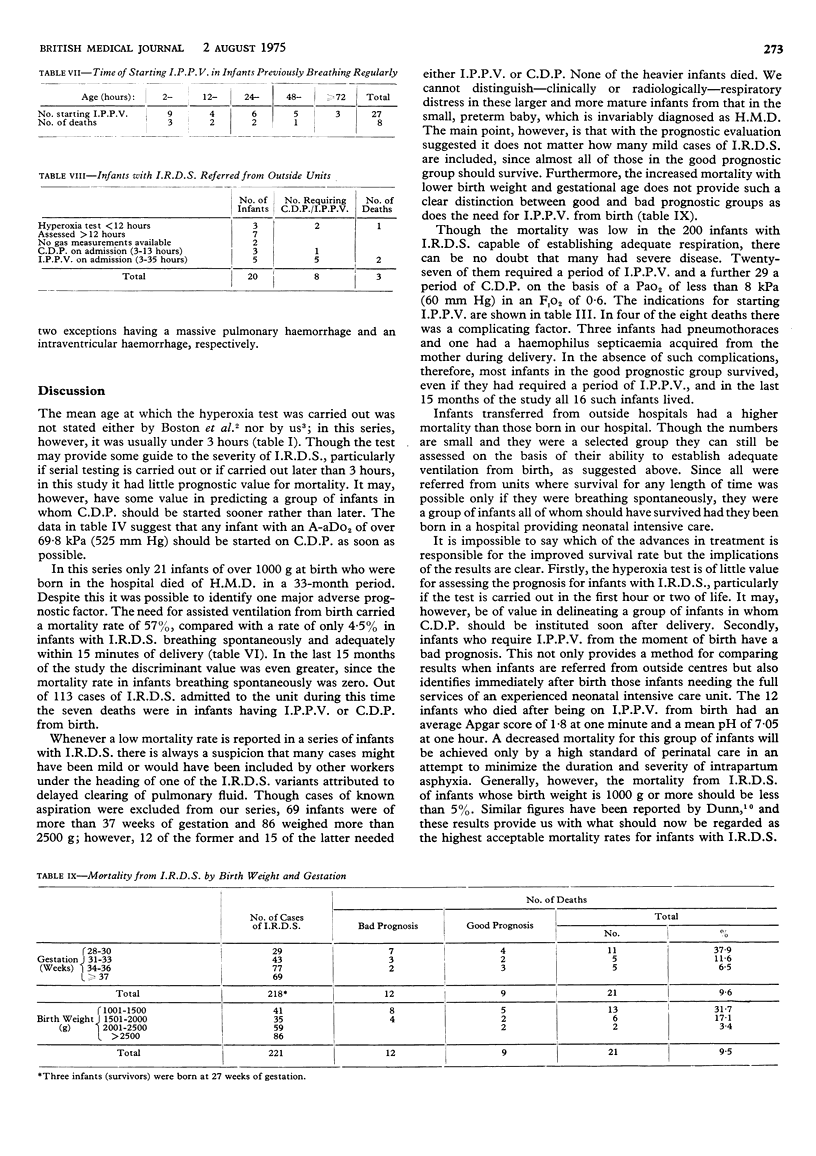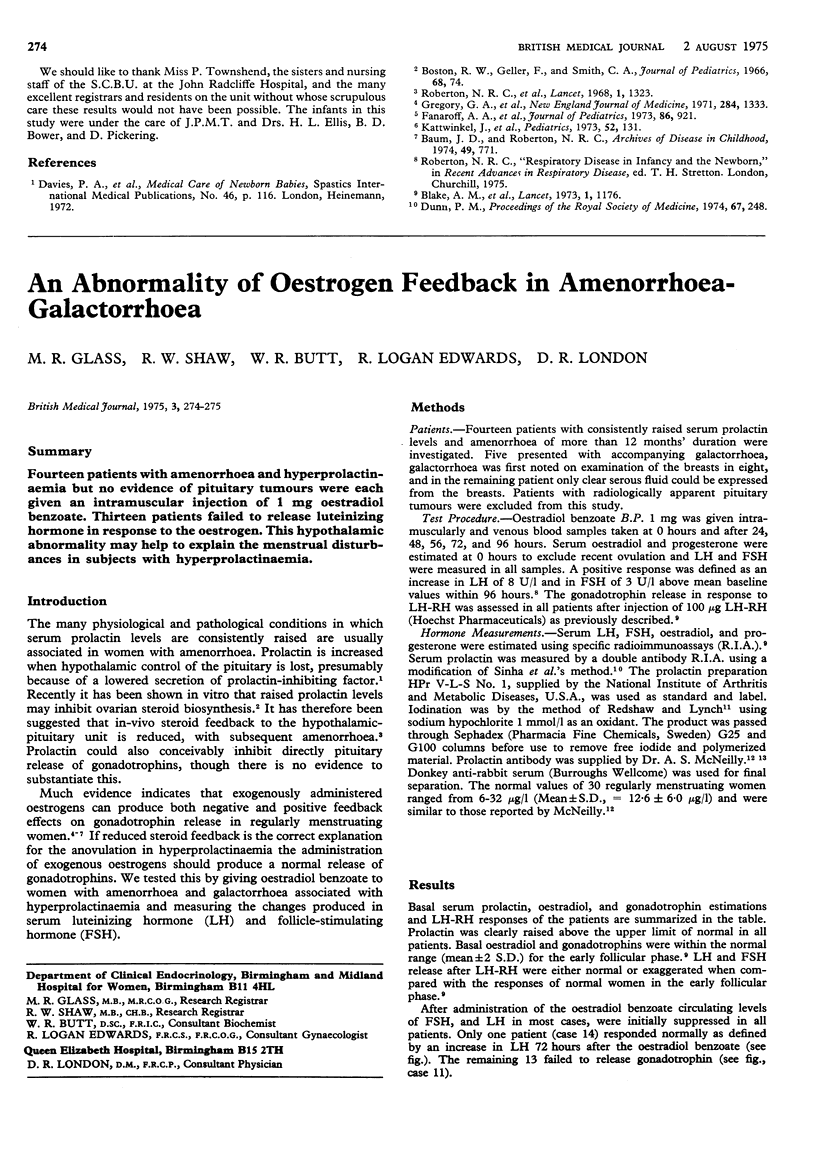Abstract
Infants with the idiopathic respiratory distress syndrome admitted to the intensive care unit during January 1972 to September 1974 were reviewed. The overall mortality rate for infants whose birth weight was 1000 g or more was under 10%, and for those who established spontaneous respiration after birth it was less than 5%. The hyperoxia test was not a useful guide to prognosis. It was possible on the basis of the infants' ability to establish spontaneous ventilation after birth to divide them into two groups. In those who established adequate ventilation the mortality rate was 4-5%; in those who did not it was 57%. This test should be generally applied, since not only does it give an immediate guide to the severity of the disease, which is better than that provided by birth weight, gestational age, or the hyperoxia test, but it may be applied to infants born in and outside a hospital providing neonatal intensive care. Improvement in the outlook for infants with a bad prognosis will be achieved only by improvements in perinatal care designed to minimize severe intrapartum asphyxia in infants of low birth weight.
Full text
PDF



Selected References
These references are in PubMed. This may not be the complete list of references from this article.
- Baum J. D., Roberton N. R. Distending pressure in infants with respiratory distress syndrome. Arch Dis Child. 1974 Oct;49(10):771–781. doi: 10.1136/adc.49.10.771. [DOI] [PMC free article] [PubMed] [Google Scholar]
- Boston R. W., Geller F., Smith C. A. Arterial blood gas tensions and acid-base balance in the management of the respiratory distress syndrome. J Pediatr. 1966 Jan;68(1):74–89. doi: 10.1016/s0022-3476(66)80424-9. [DOI] [PubMed] [Google Scholar]
- Fanaroff A. A., Cha C. C., Sosa R., Crumrine R. S., Klaus M. H. Controlled trial of continuous negative external pressure in the treatment of severe respiratory distress syndrome. J Pediatr. 1973 Jun;82(6):921–928. doi: 10.1016/s0022-3476(73)80418-4. [DOI] [PubMed] [Google Scholar]
- Gregory G. A., Kitterman J. A., Phibbs R. H., Tooley W. H., Hamilton W. K. Treatment of the idiopathic respiratory-distress syndrome with continuous positive airway pressure. N Engl J Med. 1971 Jun 17;284(24):1333–1340. doi: 10.1056/NEJM197106172842401. [DOI] [PubMed] [Google Scholar]
- Kattwinkel J., Fleming D., Cha C. C., Fanaroff A. A., Klaus M. H. A device for administration of continuous positive airway pressure by the nasal route. Pediatrics. 1973 Jul;52(1):131–134. [PubMed] [Google Scholar]
- Reynolds E. O. Methods of mechanical ventilation for hyaline membrane disease. Proc R Soc Med. 1974 Apr;67(4):248–252. [PMC free article] [PubMed] [Google Scholar]
- Roberton N. R., Gupta J. M., Dahlenburg G. W., Tizard J. P. Oxygen therapy in the newborn. Lancet. 1968 Jun 22;1(7556):1323–1329. doi: 10.1016/s0140-6736(68)92033-3. [DOI] [PubMed] [Google Scholar]


